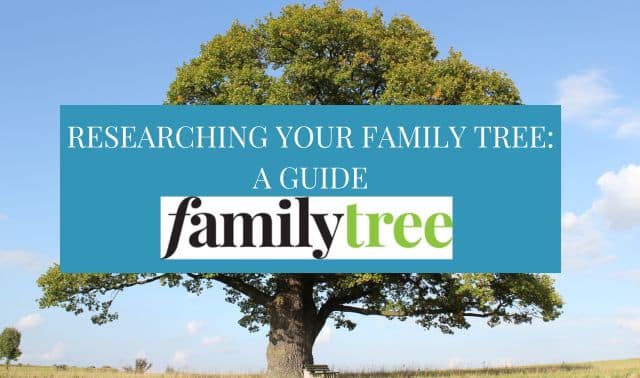“Slash your insurance rates in half!” “Lose weight the easy way!” “Enhance your performance!” Sound familiar? As the volume of unwanted junk e-mail, or “spam,” expands from a trickle to a flood, what was once a minor annoyance has become a major hassle. Spam clutters our inboxes, wastes our time and hogs down the whole e-mail system.
We genealogists are easy targets for spammers. All over the Web, we post queries containing our e-mail addresses. Marketers harvest these addresses and then bombard us with messages hawking everything from cheap Viagra to work-at-home plans to bogus coats of arms. E-mail marketing costs far less than direct-mail, radio or TV advertising, and even a small success rate yields a handsome profit for the spammer.
Legislation could help control spam. The federal Can-Spam Act of 2003 requires senders of unsolicited e-mail to identify themselves accurately. That means they can’t use misleading subject lines or disguise the e-mail’s origin. They also must provide a reply option, so recipients can specify whether they want to receive mass mailings from that sender in the future. This legislative effort is a step in the right direction, but unlikely to have much effect. Many spammers operate from abroad, and others could move offshore, outside the jurisdiction of American laws. And by opening an attachment to send a reply, you still run the risk of downloading a virus.
Meanwhile, as you wait for the anti-spam law to take effect, junk e-mail continues to fill your inbox. If you’re eager to stop the onslaught, it’s time to take action. Follow these six steps to stem the flow of spam — and reclaim your e-mail for more important pursuits, such as genealogy.
1. Use multiple e-mail addresses.
Use your primary e-mail address only for communicating with trusted contacts. Use a temporary Hotmail <www.hotmail.com> or Yahoo! Mail <www.yahoo.com> address for filling in forms or posting messages on the Web. When that address starts getting too much spam, create a new one.
2. Disguise your e-mail address.
Post your e-mail address on your Web site, but in a form that spammers’ computers can’t read. Make your e-mail address a graphic file instead of text, or disable the address with instructions for fixing it. For example, I might write “rickNOSPAM@onelibrary.com. Take out NOSPAM.” or “rickATonelibrary.com. Replace AT with @.”
3. Use your e-mail application’s filters.
Using Microsoft Outlook Express <office.microsoft.com> or Netscape Mail <www.netscape.com>, you can set up filters that put messages not specifically addressed to you in a separate folder. Outlook 2003 has a new built-in Junk E-mail Filter that successfully catches most spam and moves it to a folder you can browse later. The paid version of Eudora 6.0 <www.eudora.com> includes the Spam Watch spam-blocking utility.
4. Install anti-spam software.
Rather than setting up filters in Outlook Express or Netscape Mail, installing anti-spam software on your computer might be easier and more effective. Take a look at these two popular programs:
- McAfee SpamKiller — This software supports several e-mail systems, including Hotmail, and has a number of advanced features. An annual subscription costs $34.95 from McAfee Security. (801) 772-1891, <us.mcafee.com>
- Norton AntiSpam 2004 — This program is highly effective in blocking spam and does a good job of letting legitimate e-mail through. It costs $.39.9.5 from Symantec. (800) 631-8124,<www.symantec.com/antispam>
5. Switch Internet service providers.
Major ISPs, such as America Online (AOL) <www.aol.com> and MSN <www.msn.com>, have improved their spam-blocking tools. Earthlink <www.earthlink.net> claims that its spamBlocker keeps virtually all spam out of your mailbox. If you use a local ISP, check to see if it provides junk-mail filtering. You may have to pay a small monthly fee.
6. Subscribe to a challenge/response system.
One of the most effective methods for blocking junk e-mail makes the sender prove that he or she is a real person — not a spam-spewing computer. You create a list of e-mail addresses (including mailing lists and newsletters) from which you will accept messages. Everyone else who sends you e-mail must reply to a question, click on a link or type a word — all easy tasks for a person, but impossible for a machine. Once the sender takes the proper action, the message goes through, and the sender is added to your list of approved senders. Otherwise, the message never reaches your inbox.
These three challenge/response systems are worth checking out (GoodbyeSpam and Spam Arrest offer 30-day trials):
- GoodbyeSpam — This flexible service works with most e-mail accounts, including Hotmail, AOL, MSN and Yahoo!, and runs on PCs, Macs, personal digital assistants (PDAs) and Internet-enabled cell phones. A subscription costs $2.99 per month to filter one mailbox and an extra dollar for each additional mailbox. NextGen Development, (949) 481-1190, <www.goodbyespam.com>
- Mailblocks — This inexpensive option also works with most e-mail accounts, but it’s compatible with fewer browsers (only Internet Explorer and Safari) and operating systems (Windows 98 or higher and Mac-OS X 10.2). A subscription costs $9.95 per year for a 15MB inbox or $24.95 per year for a 100MB inbox. Mailblocks, (650) 947-9361, <about.mailblocks.com>
- Spam Arrest — This service works with standard e-mail accounts, including Outlook, Outlook Express and Eudora; support for Hotmail, AOL and MSN is coming soon. Cost is $ 19.95 for 6 months, $34.95 for a year or $54.95 for two years. Spam Arrest, support@spamarrest.com, <www.spamarrest.com>
After a week without e-mail access, I recently returned home to find my inbox filled with hundreds of messages — mostly spam. Deciding it was high time to do something, I signed up for Spam Arrest. Over the past two months, the service has blocked an average of 101 junk e-mail messages each day. That means I haven’t wasted time downloading spam or deleting it. And I’ve been less likely to overlook an important message hidden among all the junk e-mail. As a side benefit, my anti-virus software hasn’t detected a single virus in incoming mail.
Of course, missing out on all those e-mail solicitations means I’ve passed up countless opportunities for cheap medications, physical enhancement and untold wealth. But that’s just fine by me.
From the April 2004 Family Tree Magazine




